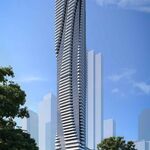deerparker
Active Member
I recall mention of a retrofit in an earlier thread, but I can't find it...
Apartment buildings to receive energy retrofit
June 12, 2008
Theresa Boyle
STAFF REPORTER
Toronto's greenhouse gas emissions will be cut by up to 5 per cent under a program to give more than 1,000 aging apartment buildings energy retrofits, Mayor David Miller says.
The Tower Renewal Project, to be launched in September, will also create jobs in trades and help revitalize needy communities.
"The best environmental solutions also bring social and economic benefits of job creation, local economic development, cleaner air and better health," Miller told 1,200 delegates yesterday at a conference hosted by the Canadian Green Building Council.
The concrete slab buildings targeted were built between the '50s and '70s, with poor insulation. One-quarter are owned by Toronto Community Housing, the rest privately owned. The retrofit involves cladding them in an outer layer of insulation and updating their mechanical systems.
"The concrete slab buildings were designed at a time when energy efficiency wasn't a very significant consideration. They're terrible wasters of energy," Miller said.
The program, in the works for a year, is a joint venture with the (Bill) Clinton Climate Initiative, the Canada Mortgage and Housing Corp. and E.R.A. Architects.
The buildings are mostly in poorer areas, including Jameson Ave. in Parkdale, St. James Town, and Jane and Finch, Miller said.
Steps will also be taken to improve the area around the buildings.
Many are "surrounded by green space that doesn't have public access, so the retrofit allows us to use the green space in a better way, perhaps rezone some of it for commercial, and perhaps have community gardens," Miller said.
"Some of these neighbourhoods have a lot of newcomers who are often entrepreneurs and have no place to create businesses. You can add commercial development to allow entrepreneurs a place to succeed."
The city may put up seed money, but the initiative will pay for itself in energy savings, Miller said.
Toronto Star
Apartment buildings to receive energy retrofit
June 12, 2008
Theresa Boyle
STAFF REPORTER
Toronto's greenhouse gas emissions will be cut by up to 5 per cent under a program to give more than 1,000 aging apartment buildings energy retrofits, Mayor David Miller says.
The Tower Renewal Project, to be launched in September, will also create jobs in trades and help revitalize needy communities.
"The best environmental solutions also bring social and economic benefits of job creation, local economic development, cleaner air and better health," Miller told 1,200 delegates yesterday at a conference hosted by the Canadian Green Building Council.
The concrete slab buildings targeted were built between the '50s and '70s, with poor insulation. One-quarter are owned by Toronto Community Housing, the rest privately owned. The retrofit involves cladding them in an outer layer of insulation and updating their mechanical systems.
"The concrete slab buildings were designed at a time when energy efficiency wasn't a very significant consideration. They're terrible wasters of energy," Miller said.
The program, in the works for a year, is a joint venture with the (Bill) Clinton Climate Initiative, the Canada Mortgage and Housing Corp. and E.R.A. Architects.
The buildings are mostly in poorer areas, including Jameson Ave. in Parkdale, St. James Town, and Jane and Finch, Miller said.
Steps will also be taken to improve the area around the buildings.
Many are "surrounded by green space that doesn't have public access, so the retrofit allows us to use the green space in a better way, perhaps rezone some of it for commercial, and perhaps have community gardens," Miller said.
"Some of these neighbourhoods have a lot of newcomers who are often entrepreneurs and have no place to create businesses. You can add commercial development to allow entrepreneurs a place to succeed."
The city may put up seed money, but the initiative will pay for itself in energy savings, Miller said.
Toronto Star





